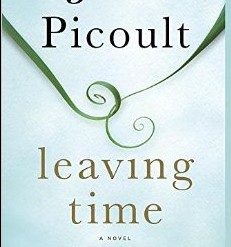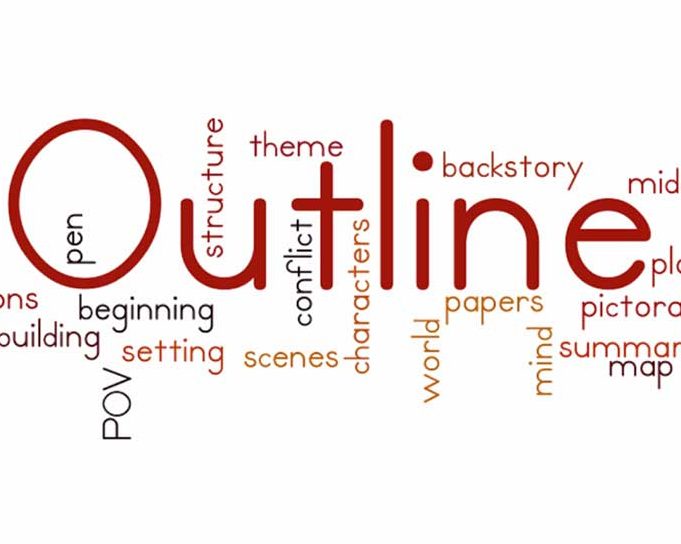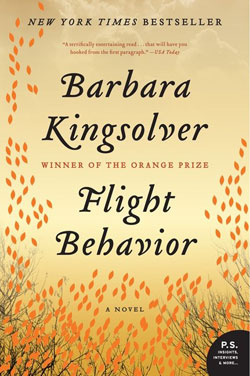Getting Scene Structure under Your Belt
Scene structure seems to be the bane of most novelists and one of the most common causes of novel failure. Writing scenes is not as easy as it looks. There are a number of key components that work together to create a dynamic, effective scene, so over the next weeks to kick off this new writing year, we’re going to deconstruct the scene.
No, there isn’t one way to right a perfect scene. Clearly, scenes are going to vary in style, composition, and length depending on a whole lot of factors. A novel’s opening scene is going to require different components than a middle or ending scene. A scene in a thriller is going to play out differently than a scene in a romantic comedy.
However, regardless of genre or the position of a scene in a novel, we can count on some basic framework principles that will help with solid scene structure. Once you frame up a building, it’s solid. You can then add your walls and electrical wiring and windows. So we’re going to tackle the framework first.
Scenes are the building blocks of our stories, so it’s essential we get this structure under our belts. Just what does that idiom mean anyway? Once we eat something and digest it, it’s now under our belt. It’s a part of us. So this in-depth look is meant to get you chewing on scene structure and help you get it into your system so that every time you sit down to write, you can crank out terrific scenes.
The “Winging It” Type of Scene
When you’re thinking about your story and laying out scene ideas, what criteria do you use? How do you decide what you are going to write about? Whether you have plotted out your storyline in detail (which is what I always recommend) or you’re more the winging-it type, at some point you have to make some decisions about each specific scene.
Too often writers think along these lines: “Well, I have to get my character John from point A to point B. He needs to go to work and have a talk with his boss because he wants a raise. If he doesn’t get a raise, he can’t pay his rent. He hates his job and his boss, but he doesn’t see any way out. So I’ll have his boss refuse the raise, and John will leave, dejected and worried.”
What often follows such “plotting” is a scene in which John wakes up (nine times out of ten, the scene begins with the alarm clock ringing), brushes his teeth, gets dressed, has breakfast, drives to work, and then goes into his office. Further along in the scene he eventually goes to talk to his boss, they talk and John asks for a raise, then the boss says “Sorry, no raise,” and John leaves. Then John goes to his desk and spends the day working, depressed, goes home at five, makes dinner, goes to bed. In some cases, the scene will keep going into the next days and weeks, seeming never to end.
I’m not joking here. I critique about two hundred manuscripts a year, and this is all too common. I hope you cringed a bit at the above scenario—and it was more scenario than scene. Were you glad I didn’t actually write out that whole scene and expect you to read it?
What’s Wrong with It?
Some things should be obvious to you. The dull beginning. The lack of build. The ending that drags on. There seems to be a point to the scene and a targeted high moment: John’s boss refusing the raise. We’re hoping that moment is important to the overall plot and adds the needed complication to the story. Let’s assume it does, and it’s positioned in the right place in the novel. But the structure of the scene is so poorly built that readers are going to be bored.
Want to write a perfect scene every time? Download this PDF worksheet with 8 simple steps to success! Click here to get your free worksheet and subscribe to the Novel-Writing Fast Track group!
If I opened a novel and the first few pages showed me a character starting his day like that, you can be sure I would stop reading. Really, any scene like that will make me stop reading at any point in a novel.
Certainly, you can throw a scene together off the top of your head like that and come back later to fix it. A lot of writers feel this is the only way they can write—by getting a lot down on the page and then reworking. I hope I don’t have to tell you there’s a much easier way.
If you want to paint a picture of your house, which makes more sense—lightly sketching the details on your canvas first or slapping down a lot of paint in a messy fashion? If you’re going for abstract and random creativity, the latter approach may suit you. But if you want to carefully capture what your house looks like—if you want it to accurately represent it—you’ll pencil it in first and make sure the proportions are correct. You may not want your painting to show a house that looks as if Picasso built it.
Gear Up to Dive In
If you don’t have my scene structure checklist, now is a good time to get it and print it out. We’re going to go over the list in detail so you can really nail scene structure. Over the next couple of months I’ll be sharing examples to help you see how to put all these into play, and on Wednesdays we’ll be looking at first pages of great novels and tearing those apart to show why they’re so effective. Throwback Thursdays we’ll be revisiting the most popular past posts on scene structure. My hope is that you’ll never write a weak scene ever again.
Here’s your assignment:
- Print out the checklist and look it over.
- Pull a couple of novels off your bookshelf and read the first page of a scene, any scene.
- Jot down on a piece of paper what you liked or didn’t like about the opening of the scene. What hooked you or didn’t? How does the scene start: with narrative, explanation, dialogue, action? What key facts did you pick up on that first page? What did you learn about the character’s mind-set and personality? Was some conflict or problem shown or hinted at?
- Come back to this post and share an opening paragraph and your comments about it.
While this is only looking at scene openings, my aim is to get you homing in on the components being used to set up scenes. To get you to pay attention to what catches your interest, as a reader, when you start reading a scene. If you know what bores you or disengages you, you can avoid those flaws in your own scenes.
Sadly, many writers stuff their scenes with details that they themselves would find boring in someone else’s book. Sticking to Elmore Leonard’s maxim is half the battle to constructing a great scene: “Try to leave out all the parts readers skip.”
Be sure to subscribe to Live Write Thrive so you’ll get all these posts each week via email. And if you haven’t signed up for my newsletter, do so here. You’ll get my free ebook on strategic planning for writers, and lots of great offers and specials only available to my subscribers.
Next week we’ll look at the 5 basic essentials of scene structure.
How hard is it for you to construct scenes? Do you follow some sort of method? What is the hardest challenge for you when it comes to writing scenes? Share an opening paragraph from a novel and tell us why it worked or didn’t.












I love scenes. Reading them and writing them. And this is a GREAT post about ’em. I know that you ask for examples of good openings, but I’d rather say: good post as an alternative to the usual Scene & Sequel / MRU approach. While I don’t agree with all the Checklist statements (not all midway scenes need “a strong opening line that hooks the reader,” in my opinion), the very existence of the Checklist is great, and it’s being printed and taped up right next to the earlier “Check Your Underwriting: 10 Key Questions to Ask…”
Oh, alright… here’s the beginning of a scene per the assignment:
[from “The Orenda” by Joseph Boyden]
The winter crawls, its brutal cold growing through the month of February. The illness that so many of our sauvages suffers shows its ugly face to us as well. I worry it’s the influenza with its high fever and vomiting and diarrhea….
This is basic narration and setting (the entire book is multiple first person POVs). Nothing earth-shattering. Nothing really hooking in that opening line. Just basic stuff to orient and get the reader into the scene. This is 2/3 through the book so the reader doesn’t really need to be “hooked.” The reader knows the characters and knows the dramatic question. Things need to happen in the scene (and they do), but this reader is OK with this kind of basic orientation at this scene’s start.
I’m much more in line with your thinking of having strong scene ENDINGS, hanging or resolved, maybe with a surprise or “kicker.”
Scene from The Help by Kathryn Stockett
The scene starts with narrative by way of introducing Abileen and what she does for a living, “Taking care of white babies.” The emphasis is on a child, “Mae Mobley my special baby.”
Key Facts:
1. The name of the narrator is Abileen
2. The date of birth of Mae Mobley
3. Mae Mobley was a screaming baby
4. The mother, Miss Leefolt ignores her own baby and may be suffering from the “baby blues,” frowns all the time, is skinny, and has “thin, brown, see-through hair.”
I liked the voice of the narrator from the first sentence. The narrator’s personality comes trough as confident, competent, and loving. The problem hinted at in this first scene was the disconnect between the baby and the mother, as well as, the relationship of the mother and the “help.”
Thanks for sharing this! This shows a good example of setting up the premise for the novel and introducing the main character and the hint at complications and thematic issues.
Book: “The Amateur Marriage,” by Anne Tyler
Scene: Pauline returns home from neighborhood pool with children under the suspicious eye of her mother-in-law.
Opening paragraph: Her mother-in-law was watching for them from the living-room window. Pauline saw the fishnet curtain twitch as they approached. by the time they walked in the back door, though, she was sitting in the kitchen with both hands grasping the table edge. “Where have you all been?” she cried. “I was out of my mind with worry!”
What I liked: The scene gets right into the conflict, mistrust and dissembling surrounding the relationship between Pauline and her mother-in-law.
Key facts picked up on the first page of scene: Mother-in-law is suspicious of Pauline and watches her; Mother-in-law is afraid of getting lost in new neighborhood and has become dependent on Pauline (and Pauline seems to be enabling her); Mother-in-law is judging Pauline harshly and it’s driving Pauline nuts.
My comments: I think Anne Tyler is a master at telling stories through scenes. This scene is just full of conflict. I love the small but telling details: the MC saw the “fishnet curtain twitch” and knew it was her spying mother-in-law. Pauline opens a can of chicken-noodle soup for her mother-in-law, who then says she wants vegetable beef. Tyler keeps her scenes short — this one was about 1-1/2 pages. It ends with what I guess would be called a one-paragraph sequel. After having her mother-in-law question her motives (and we know in fact that Pauline is not telling the complete truth about where she’s been), the text says, “Sometimes, Pauline got a feeling like a terrible itch, like a kind of all-over vibration, and the thought that at any moment she might jump clear out of her skin.”
I love this. I’m a big Anne Tyler fan. She does a great job here setting up tension between characters right off the bat. This is a great example of getting right into action with tension and arousing curiosity by not saying too much but indicating at trouble. Thanks so much for sharing this.
The scene that is often most difficult for me to write is the opening scene. I’ve drafted it and redrafted it, and it’s sort of driving me crazy. Hopefully these future posts about scenes can help me get it right. I’m one of those who plan what they are going to write!
Book: Cross My Heart by James Patterson
First Paragraph:
Sitting in a parked work van on Fifth Street on a beautiful April morning, Marcus Sunday used high-definition Leica binoculars to monitor Alex Cross’s house and felt a genuine thrill, thinking that the great detective was sure to make an appearance sometime in the next half hour or so.
This character is the villian, but he is stalking the protagonist Alex Cross. On the first page you find out the name of both characters as well as Cross’s grandmother, that Cross has a wife, children, and his grandmother lives with him. The day is beautiful and it’s April.
Sunday is stalking Cross outside his house, which makes you wonder why. Sunday is very detailed creating a cover that allows him to remain in plain sight as he does it. Patterson adds a few lines to describe Cross’s grandmother (appearance and impressions) as Sunday watches her walk up the street.
There is quite a bit of information on this first page that makes you want to find out what’s going on.
This is a good example of writing to genre in writing style and choice of scene opening. Thanks for sharing this!